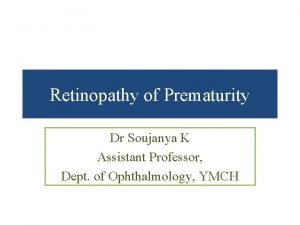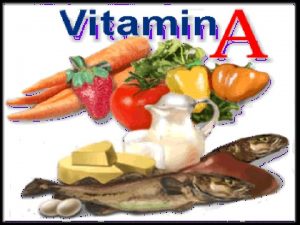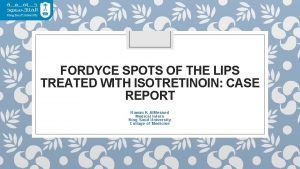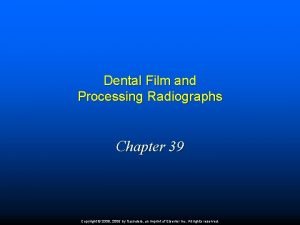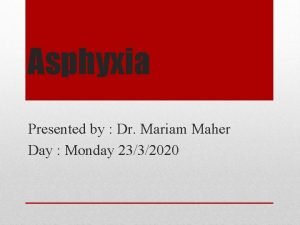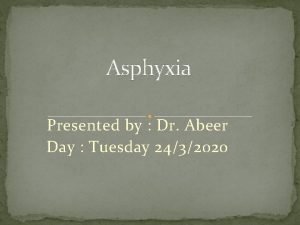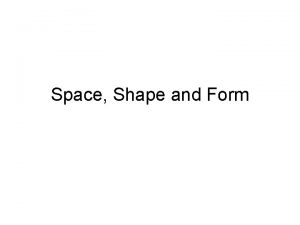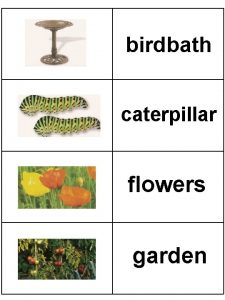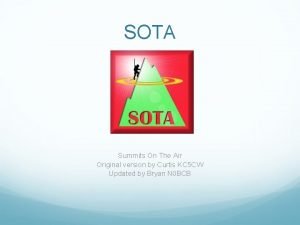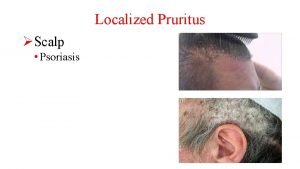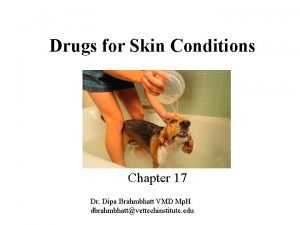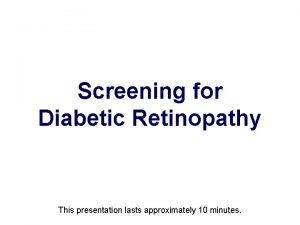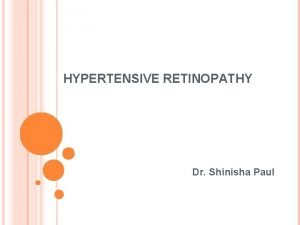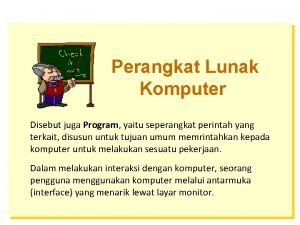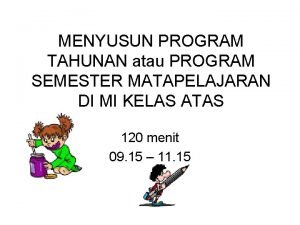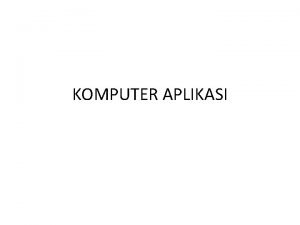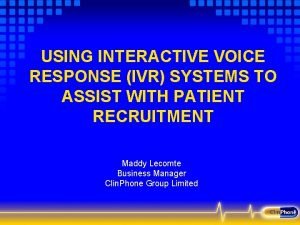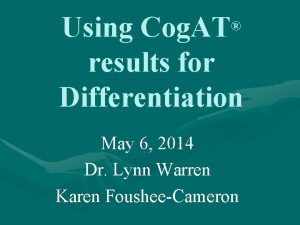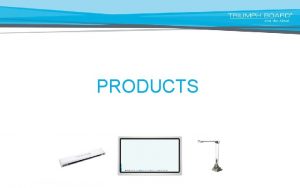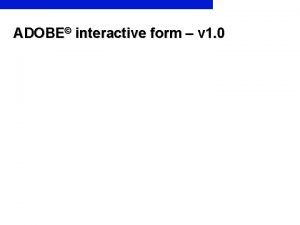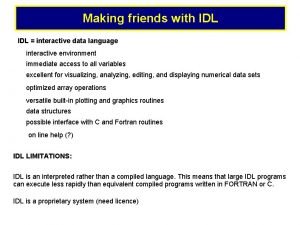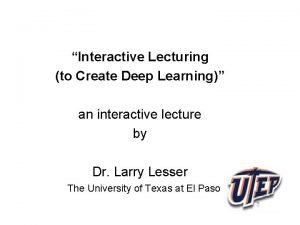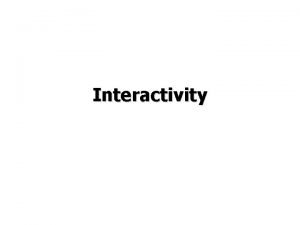What is SPOTS SPOTS is an interactive program





































- Slides: 37


What is SPOTS? • SPOTS is an interactive program designed to introduce teenagers to the importance of sun protection and its role in skin cancer

Collaborative Project • Medical Students (SLU & WU) • Physicians/Nurses • Statisticians • School of Public Health

2006 -2007 Synopsis • 40 MD & 1 MPH students were trained • 1939 secondary students were taught • 6 middle schools/1 high school

Whose Behind Us? Saint Louis University Hospital Auxiliary Grand Visions Grant

Recognized in Academia • AACE Conference: J. of Cancer Education • Annual city-wide Dermatology Grand Rounds, WU • Surgical grand rounds, SLU • ACP state conference • Abstracts submitted to the AAD, AAS, and SSO • Presenting at National AAD conf in Feb 2008

In the Publics’ Eye… • The Record (WU newspaper) 01 -25 -07 http: //record. wustl. edu//news/page/normal/8542. h tml • The Newsletter (SLU online news), 04 -30 -07, “Skin Cancer and Young People” http: //www. slu. edu/x 15217. xml • St. Louis Post Dispatch, Health and Fitness Section, 05 -14 -07, “The Dark Side of the Sun. ” News story and SPOTS video was online for entire summer at Post website.

Why Skin Cancer? • Melanoma is the 2 nd most common cancer diagnosed in women aged 20 -30 • Melanoma is the leading cause of cancer-related deaths in women aged 25 -30 years in 2005 ● Basal Cell skin cancer comprises 33% of all cancers

Information Taught • • • Skin cancer statistics Visual ID of skin cancers Myths & Facts Risk Factors Preventative methods Demonstration of sun protection methods

Demonstration • Program • Part 1: Early Detection • Part 2: Prevention

Who We Are • Students in the health professions • Students interested in educating teens about sun protection

Part 1 Early Detection Start with a game to break the ice

Myth or Fact?

MYTH! Won’t a “healthy” tan protect my skin? A Tan: is your skin’s defensive reaction to radiation means that your skin has been damaged & is trying to protect itself with melanin is limited based on the color of your skin, hair and eyes (lighter = less protected)

Getting a base tan will prevent a person from getting a sunburn MYTH! A base tan is = SPF of 2 for a skin type II

Lifetime Risk of Getting Melanoma 1935: 1960: 1980: 2002: 1/1500 people 1/800 1/250 1/67 Over a 2000% increase -Increasing by 3 -4% every year. By 2010 projected to rise to 1/501

Basal Cell Skin Cancer Warning Signs * A shiny bump that is pearly in appearance * Purple ring is from a marking pen

Squamous Cell Skin Cancer Warning Signs Open sores that don’t heal within 3 -4 wks

Melanoma Warning Signs ●Found on sun-exposed and non-sun-exposed areas ● 70% of skin cancer deaths ●ABC method ●Normal v Abnormal spot

Asymmetry Normal Abnormal Summer Youker, MD 1/2 ≠ other ½ in size or shape

Border Normal Abnormal edges are irregular, scalloped, not round

Color Normal Abnormal more than 1 color presence of blue, red, blue-black, white

Diameter Normal Abnormal > size of pencil eraser (6 mm)

Evolving/Elevation Daniel Ring, MD Evolving Elevation All pictures are abnormal Change, especially height

#1 risk factor=change in an existing mole Change = itches, bleeds, crusts or changes size, shape or elevation Estimated relative risk of >400% association in the development of melanoma

Part 2 Prevention

Hands-on demos How to ID your skin type ● How to choose and use a sunscreen ● Tips for applying self-tanner ● Problem with tanning beds ● UVA/UVB radiation – what’s the big diff? ● Other sun protective methods such as. . . ●

The Ultraviolet Spectrum UVA blocked by atmosphere 10% sun’s rays 90% sun’s rays ▪Aging rays/skin cancer ▪penetrates deeper (dermis)/glass ▪more skin components can absorb UVA ▪no warning sign ▪ 20 X more reaches earth than UVB ▪tanning bed bulbs UVB ▪Burning rays/skin cancer ▪penetrates epidermis but not clouds, glass ▪warning sign = sunburn

NO Indoor Tanning ▪ Bulbs are 93 -98% UVA 2 -12 X more UVA than summer noontime sun ▪ Face insert - emits more UVA than the bed Horizontal bed Vertical bed ▪ Tanning indoors adds 30 -300% more UVA to one’s annual solar exposure ▪ Higher Inside tanning bed level tanning beds emit more radiation in shorter time period

Skin Analyzer Machine (SAM)

Photos provided courtesy of David H. Mc. Daniel, MD and with permission from the American Academy of Dermatology, all rights reserved.

Photos provided courtesy of David H. Mc. Daniel, MD and with permission from the American Academy of Dermatology, all rights reserved.

Benefits to Teachers. • Volunteer in community • Communicate health risks and guide behaviors of teens • Build own knowledge base about skin cancer Med students are inconsistently taught to recognize skin cancers ▪ 23% had never observed a skin cancer exam [SCE] ▪ 27% had never been trained to perform an SCE ▪ 43% had never examined a patient for skin cancer ▪ 69% agreed there was insufficient emphasis placed on learning to do an SCE in their medical training. ▪ This program takes advantage of the fact that teaching a subject is a profound learning experience and all drs, no matter their specialty, should be doing SCE’s as a part of their routine H&P. Moore M, Geller A, Zhang Z, et al. Skin cancer examination teaching in US medical education. Archives of Dermatology, Apr 2006; 142: 439 - 444.

Training sessions. • Session #1 • Overview of skin cancer • presented by a Dermatologist • Teen behavior basics • presented by Adolescent Med MD or Ph. D in Public Health Professor • Session #2 • Run-through of SPOTS presentation • presented by nurse educator

Ready to go…. • • Power. Point Lecture script Training manual Video available online at http: //spots. wustl. edu

CITI Certification The CITI Program is a subscription service providing ethics education to all members of the research community. To participate fully, learners must be affiliated with a CITI participating organization. 1. Go to www. citiprogram. org Complete biomedical if med student, social behavioral if public health student Due Dec 19 2. Email Steph copy of completion report sheet

Contacts Fatima Ali - alikf@slu. edu Kate Leonard - leonardk@slu. edu Chad Nelson - cnelso 17@slu. edu Taylor Greenwood- tgreenwo@slu. edu
 Siegrist elschnig spots
Siegrist elschnig spots Cold war hot spots
Cold war hot spots Posterior staphyloma
Posterior staphyloma Forster fuchs spots
Forster fuchs spots Bitot spot
Bitot spot Fordyce spots isotretinoin
Fordyce spots isotretinoin Turbulent spots
Turbulent spots Causes of cotton wool spots
Causes of cotton wool spots Herringbone pattern x ray
Herringbone pattern x ray Silvery spots in asphyxia
Silvery spots in asphyxia Silvery spots in asphyxia
Silvery spots in asphyxia Small areas of white used to show the very brightest spots
Small areas of white used to show the very brightest spots Red bug with black spots
Red bug with black spots Sota summits
Sota summits Comerciales de radio
Comerciales de radio What are mongolian spots
What are mongolian spots Mild scalp psoriasis pictures
Mild scalp psoriasis pictures Chubari spots
Chubari spots Dermatophysis
Dermatophysis Equipment blind spots
Equipment blind spots White spots on mammogram images
White spots on mammogram images Sotawatch spots
Sotawatch spots Small spots
Small spots Deflection of veins at av crossing
Deflection of veins at av crossing Moulding defect
Moulding defect Sequential program and an event-driven program?
Sequential program and an event-driven program? Perangkat lunak
Perangkat lunak Menyusun program tahunan dan program semester
Menyusun program tahunan dan program semester Spreadsheet adalah program
Spreadsheet adalah program Microsoft excel adalah program pengelola
Microsoft excel adalah program pengelola Langkah langkah memulai microsoft word
Langkah langkah memulai microsoft word Mussolini death
Mussolini death Multimedia becomes interactive multimedia when
Multimedia becomes interactive multimedia when Diagnosis of needs by taba
Diagnosis of needs by taba Interactive voice response system randomization
Interactive voice response system randomization Cogat.com interactive profile interpretation
Cogat.com interactive profile interpretation Line interactive ups block diagram
Line interactive ups block diagram Understanding experience in interactive systems
Understanding experience in interactive systems


